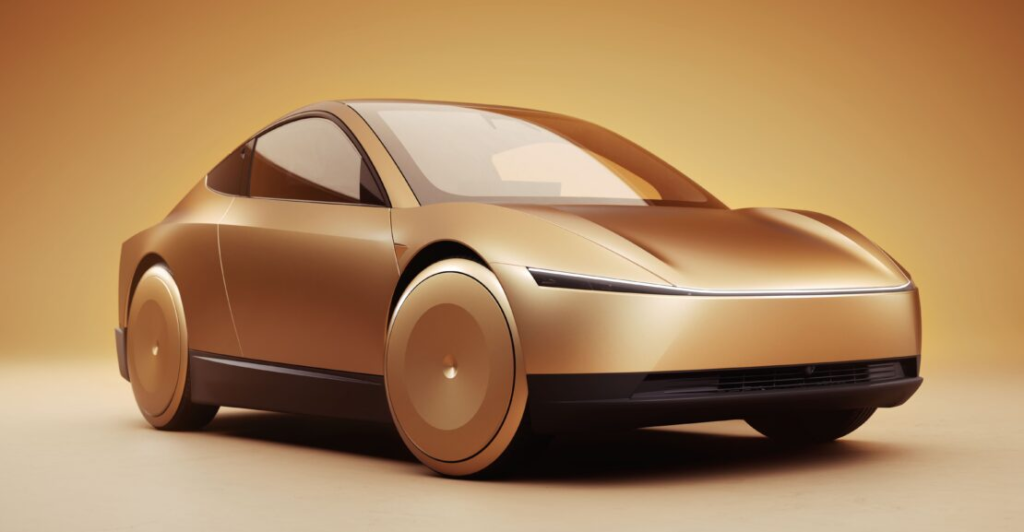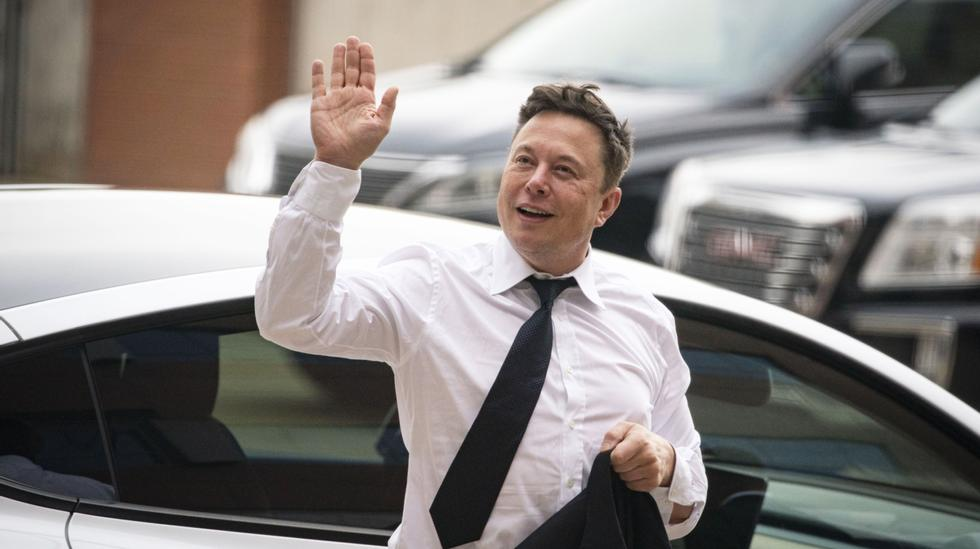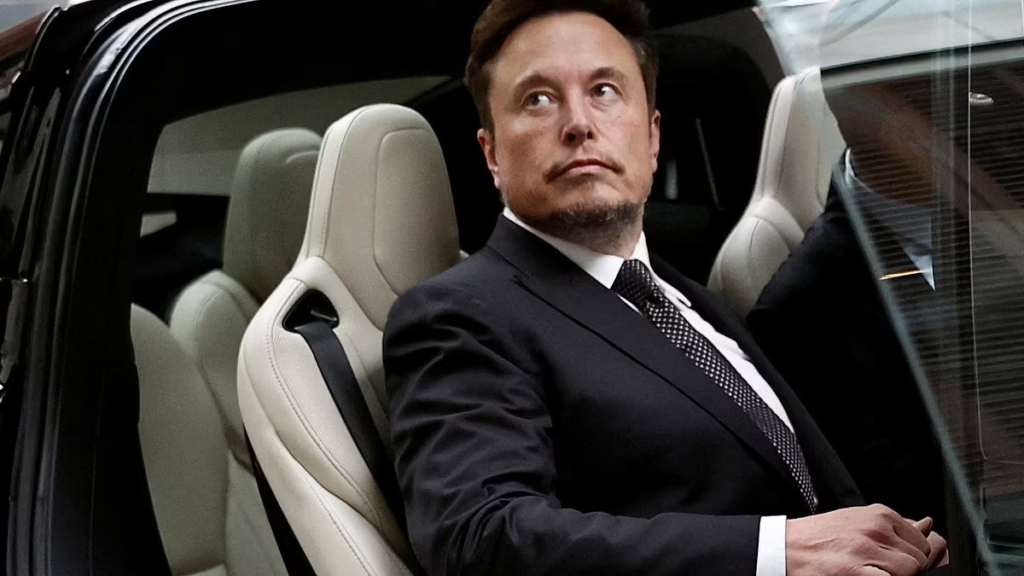Elon Musk has once again raised the stakes for Tesla’s ambitious future, promising to introduce paid, driverless robotaxi services as early as 2025. These futuristic self-driving vehicles are part of Musk’s long-term vision for Tesla, with plans to launch the service in California and Texas first.
However, the journey toward fully autonomous driving is fraught with significant regulatory and technological challenges, making this an audacious goal for the electric vehicle giant.
The Vision for Driverless Robotaxis
Tesla has always aimed to be at the forefront of innovation, and the driverless robotaxi is no exception. Elon Musk first introduced the concept of Tesla’s robotaxi fleet back in 2019, claiming that fully autonomous vehicles would soon become a reality.
Over the years, Musk has repeatedly promised that Tesla will revolutionize the transportation industry with its self-driving capabilities, taking ride-hailing to a whole new level by eliminating the need for human drivers.
Musk recently reiterated this vision during Tesla’s quarterly earnings call, revealing plans to roll out driverless robotaxis to the public by 2025. These robotaxis will reportedly operate on Tesla’s Full Self-Driving (FSD) technology, an advanced driver-assistance system that uses a combination of cameras, radar, and artificial intelligence to navigate roads without human intervention.
Read : I’ll Shave My Head on Camera If Musk Launches Tesla Robotaxi Before 2027: MKBHD
The company already offers a limited ride-hailing service to its employees in the San Francisco Bay Area, using this technology to test its capabilities.
The potential for Tesla’s robotaxi fleet is immense. Once deployed, these autonomous vehicles could dramatically reduce the cost of ride-hailing services by eliminating the need to pay drivers.
For consumers, this could mean cheaper transportation options and a more convenient, on-demand service. For Tesla, it represents a major revenue stream that could further solidify its dominance in the electric vehicle and autonomous driving markets.
Read : Optimus Robot Could Drive Tesla’s Valuation to $25 Trillion
However, despite Musk’s confidence in Tesla’s ability to deliver on its promises, there are still several hurdles to overcome before driverless robotaxis become a reality.
Regulatory Challenges in California and Texas
One of the biggest obstacles Tesla faces in rolling out its robotaxi service is obtaining the necessary regulatory approvals. In California, where Tesla is headquartered, regulations governing autonomous vehicles are stringent.
The California Public Utilities Commission (CPUC), which oversees ride-hailing services, and the Department of Motor Vehicles (DMV), which regulates autonomous vehicle testing, have laid out strict guidelines for companies looking to deploy self-driving cars.
Tesla’s last reported use of its autonomous vehicle testing permit in California was in 2019, but that permit required the presence of a safety driver behind the wheel at all times. To move forward with a fully driverless service, Tesla would need to apply for a permit that allows for the testing and deployment of vehicles without a driver. As of now, the company has not applied for such a permit.

In contrast, the regulatory landscape in Texas is more favorable for Tesla. The state has far fewer restrictions on autonomous vehicles, which could make it an attractive location for Tesla to launch its robotaxi fleet. However, even in Texas, companies typically spend months or even years testing their autonomous systems before deploying them for paid services.
While Musk has acknowledged the potential regulatory challenges, he remains optimistic that Tesla will secure the necessary approvals by 2025. “I would be shocked if we don’t get approval next year,” Musk said during the earnings call.
Still, he conceded that regulatory hurdles are largely beyond Tesla’s control, particularly in a state like California, where regulatory processes are known to be complex and time-consuming.
The broader issue Musk raised during the call is the lack of a national approval process for autonomous vehicles in the United States. Currently, regulations vary from state to state, which can create challenges for companies like Tesla that are looking to scale their operations nationwide.
Musk has called for a unified national regulatory framework that would streamline the approval process for autonomous vehicles and make it easier for companies to bring these innovations to market.
Technical and Safety Concerns
In addition to regulatory challenges, Tesla’s robotaxi rollout faces significant technical and safety concerns. The company’s Full Self-Driving (FSD) system, which is the backbone of its autonomous ambitions, has been under scrutiny for years. While Tesla markets FSD as a fully autonomous driving system, the reality is that the technology is still considered a driver-assistance system that requires human supervision.
Tesla’s FSD has been involved in several high-profile incidents, including a recent fatal crash in 2023. The U.S. National Highway Traffic Safety Administration (NHTSA) has opened an investigation into 2.4 million Tesla vehicles equipped with FSD, following multiple reports of collisions.
These incidents have raised questions about the safety and reliability of Tesla’s autonomous driving technology, with critics arguing that the system is not yet ready for widespread use.
One of the biggest challenges facing Tesla’s FSD technology is its reliance on cameras and artificial intelligence (AI) to navigate the road. Unlike other autonomous vehicle developers, such as Alphabet’s Waymo, Tesla does not use lidar or radar systems to supplement its cameras.

Instead, it relies entirely on vision-based AI to interpret the environment and make driving decisions. While Musk has long championed this approach as the future of autonomous driving, others in the industry have expressed skepticism, arguing that Tesla’s system may not be robust enough to handle the complexities of real-world driving.
Despite these concerns, Tesla continues to push forward with its autonomous vehicle development. At the company’s robotaxi unveiling event in October 2023, Musk introduced the “Cybercab,” a two-seater, two-door autonomous vehicle without a steering wheel or pedals.
The vehicle is designed to be fully autonomous, using Tesla’s FSD technology to navigate roads. While the Cybercab represents a bold vision for the future of transportation, it also highlights the technical challenges Tesla faces in bringing this vision to life.
Musk’s ambitious timeline for the rollout of driverless robotaxis by 2025 has sparked both excitement and skepticism. Investors were initially cautious following the robotaxi unveiling, with Tesla’s stock dropping due to concerns over the lack of a clear business plan.
However, during the recent earnings call, Musk was able to regain some investor confidence by projecting a significant increase in vehicle sales for the coming year.
The robotaxi initiative also poses a potential threat to traditional ride-hailing services like Uber and Lyft. The news of Tesla’s plans sent shares of both companies down by 2.3% in post-market trading, reflecting investor concerns that Tesla’s robotaxi fleet could disrupt the ride-hailing industry.
If Tesla is able to successfully deploy its autonomous vehicles, it could dramatically change the landscape of urban transportation, offering cheaper and more efficient ride-hailing options that don’t rely on human drivers.
The Road Ahead for Tesla’s Robotaxi Ambitions
As Tesla moves forward with its plans for driverless robotaxis, the company faces a delicate balancing act between innovation and regulation. Musk’s vision for a fully autonomous future is undeniably exciting, but it also comes with significant challenges that need to be addressed before it can become a reality.

Regulatory approval is one of the biggest hurdles standing in Tesla’s way, particularly in states like California, where autonomous vehicle testing is tightly controlled. While Texas offers a more favorable regulatory environment, Tesla will still need to navigate complex safety and testing protocols before it can launch a paid ride-hailing service.
In addition to regulatory challenges, Tesla must also address the technical limitations of its FSD system. While the company has made significant strides in autonomous driving technology, recent incidents have raised concerns about the safety and reliability of the system.
Musk’s vision of a fully autonomous vehicle that can operate without human supervision is still a work in progress, and it remains to be seen whether Tesla can overcome these technical hurdles in time to meet its 2025 timeline.
Despite these challenges, Musk’s ambitious plans for Tesla’s robotaxi fleet could have a transformative impact on the transportation industry.
If Tesla is able to successfully deploy its autonomous vehicles, it could disrupt the traditional ride-hailing market and pave the way for a new era of transportation. For now, all eyes are on Tesla as it continues to push the boundaries of what’s possible with autonomous driving technology.
let’s enjoy few years on earth with peace and happiness….✍🏼🙏

